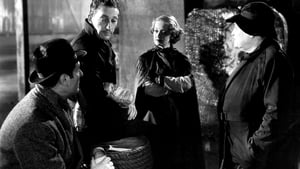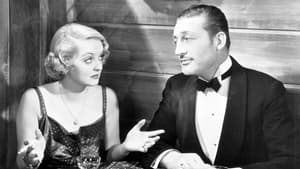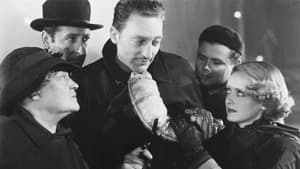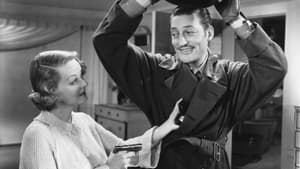Video Sources 0 Views
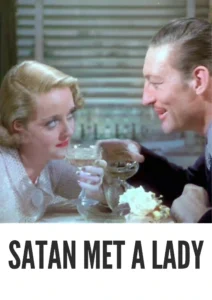
Synopsis
Devilish Fun in Disguise: Satan Met a Lady (1936) in Vibrant Color

Dive into the zany world of Satan Met a Lady, a delightful screwball comedy from 1936, now beautifully colorized for a fresh and engaging viewing experience. Based on The Maltese Falcon by Dashiell Hammett, this film offers a comedic twist on the classic detective story. Starring Warren William and Bette Davis, this HD download is perfect for those who enjoy classic comedies with a touch of mystery. The movie is also known as The Maltese Falcon.
Satan Met a Lady Storyline: A Hilarious Hunt for a Priceless Artifact
Satan Met a Lady follows detective Ted Shane (Warren William) as he becomes entangled in a quest for a valuable jeweled horn. His client, Valerie Purvis (Bette Davis), draws him into a web of intrigue, filled with eccentric characters and comical mishaps.As Ted investigates, he encounters a cast of suspicious individuals, each with their own agenda. Misunderstandings and mistaken identities abound as Ted navigates through the chaos, trying to uncover the truth behind the mysterious horn. From beginning to end, Satan Met a Lady is a lighthearted and entertaining comedy that puts a unique spin on the detective genre.
Movie Cast
The film features a talented cast of actors who bring this comedic story to life:
- Warren William as Ted Shane
- Bette Davis as Valerie Purvis
- Alison Skipworth as Madame Barabbas
- Arthur Treacher as Anthony Travers
- Porter Hall as Milton Ames
Movie Genre
Satan Met a Lady falls into the genre of screwball comedy, with elements of mystery and romance. Its fast-paced dialogue, quirky characters, and outlandish situations make it a delightful and entertaining film.
Historical Context: A Comedic Take on a Classic
Released in 1936, Satan Met a Lady offers a comedic interpretation of Dashiell Hammett’s novel, The Maltese Falcon. While it differs significantly in tone and style from other adaptations of the novel, it provides a unique perspective on the story, showcasing the comedic talents of its stars. The film was released during a time when screwball comedies were gaining popularity.
Colorization Details
This colorized version of Satan Met a Lady has been meticulously restored using modern digital techniques, enhancing the visual appeal while preserving the film’s original charm and comedic timing. The colorization process involved carefully analyzing the grayscale tones of the original black and white footage and assigning appropriate colors to each scene. This painstaking process brings new life to the characters and settings, making the story even more engaging for modern audiences.
Technical Details
- Director: William Dieterle
- Screenplay: Brown Holmes
- Based on: The Maltese Falcon by Dashiell Hammett
- Cinematography: Arthur Edeson
- Edited by: Warren Low
- Production Company: Warner Bros. Pictures
- Distributed by: Warner Bros. Pictures
- Runtime: 64 minutes
Technical Specifications
- Download Format: MP4
- Resolution: HD (1080p)
- Compatibility: Compatible with most devices, including smartphones, tablets, computers, and smart TVs.
Reviews and Critical Reception
Satan Met a Lady (1936) is recognized as a comedic adaptation of The Maltese Falcon, offering a lighter and more humorous take on the classic detective story. While it may differ significantly from the source material, it remains an entertaining example of screwball comedy and a showcase for the comedic talents of its stars.
FAQs
- Q: What is Satan Met a Lady about?
- A: Satan Met a Lady is a screwball comedy about a detective who becomes entangled in a quest for a valuable jeweled horn.
- Q: Is Satan Met a Lady (1936) based on The Maltese Falcon?
- A: Yes, Satan Met a Lady is a comedic adaptation of Dashiell Hammett’s novel, The Maltese Falcon.
- Q: Is this version of Satan Met a Lady colorized?
- A: Yes, this version has been professionally colorized to enhance the viewing experience.
- Q: What makes Satan Met a Lady interesting for classic film fans?
- A: Satan Met a Lady offers a unique and comedic take on a classic detective story, showcasing the talents of Warren William and Bette Davis.
- Q: What is the download format?
- A: The download format is MP4, which is compatible with most devices.
- Q: What resolution is the download?
- A: The resolution is HD (1080p), providing a high-quality viewing experience.
Download Now in HD!
Watch Satan Met a Lady Today!
